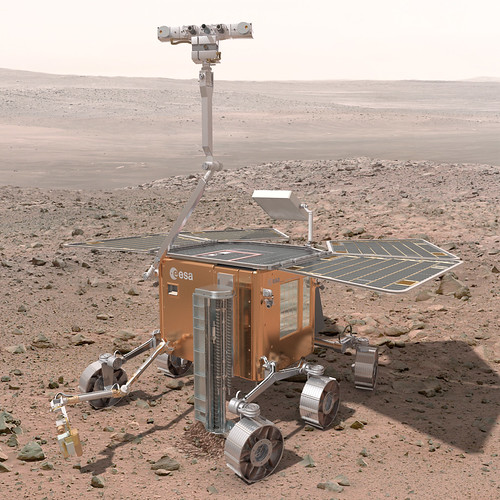“Bridget” on Mars

"Bridget" will be driving on Mars in 2018 or so, presumably on the other side of the street.
The new European version of a Mars rover, ExoMars, is being tested in a sand quarry in Bedfordshire:
The quarry – chosen for its similarity to Martian terrain – saw cameras and image processing software tested on the ExoMars prototype rover Bridget.
The rover will be equipped with a raft of cameras and the aim is to integrate them and the data they will send back.
The technology developed for the mission has applications not only in space science but also here on Earth.
The eventual rover will have a pair of front-mounted navigation cameras and a quartet of cameras at its corners for hazard avoidance.
It will also have a pair of scientific cameras that give it stereoscopic vision and thus depth perception, as well as a high-resolution camera for zooming in on areas of interest.
The wide-angle scientific cameras are equipped with filter wheels, which limit the light that reaches them to specific wavelengths.
Measuring the sunlight reflected off Martian terrain in these specific bands gives information on the chemical makeup of whatever is in the field of view.
The aim of the EU PRoVisG (Planetary Robotics Vision Ground Processing) project is to stitch together all of the information from the cameras, ensuring for example that the scientific results are tagged to the location at which they were taken and that the navigation cameras’ views are assembled into a virtual, 3D representation of the rover’s environment.
What are they looking for? Plenty:
The ExoMars mission’s scientific objectives, in order of priority, are:
- To search for signs of past and present life on Mars.
» Read more…
- To characterise the water/geochemical distribution as a function of depth in the shallow subsurface.
- To study the surface environment and identify hazards to future human missions.
- To investigate the planet’s subsurface and deep interior to better understand the evolution and habitability of Mars.
Video report, via ITN…